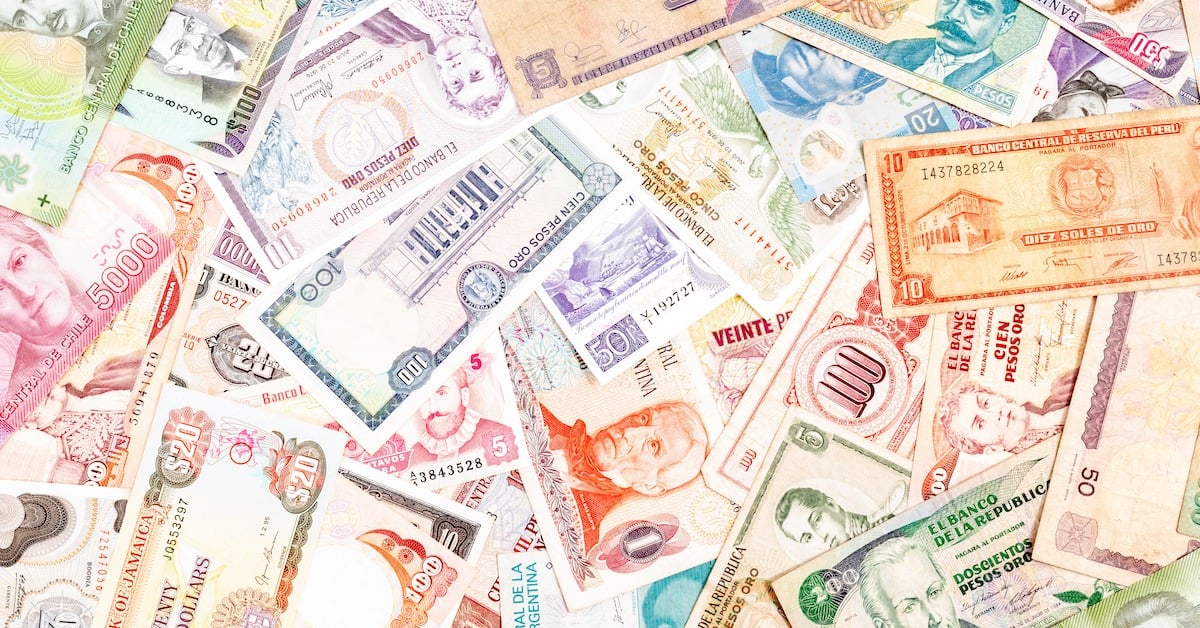Another year of record-breaking remittances appears to be on the horizon for Central America.

Central America seems set for another record-breaking year for remittances, with regional totals approaching $45 billion. Guatemala alone is expected to receive $19.5 billion. Meanwhile, Nicaragua continues to enjoy explosive growth.
Mario Arturo García, manager of small and midsize business at Banco Agromercantil and a migrant expert, says, “The record growth is due to the [tight] labor supply in the US and the record hourly payments. This creates the perfect narrative for there to be more migration and more desire to migrate.”
It is not just the US labor market that accounts for the boom. For example, part of the Nicaraguan surge in remittances can be attributed to workers migrating to Costa Rica, whose economy is expanding with an uptick in foreign investment. Intel recently announced a $1.2 billion superconductor deal in Costa Rica, for instance, which should not only build out infrastructure, but also boost STEM job creation—well beyond the 3,300 workers the US chip manufacturer already employs in the country.
The investment is arguably another consequence of the US Chips and Science Act of 2022. Intel CEO Patrick Gelsinger called it the most meaningful American industrial policy since World War II.
Remittances to Nicaragua increased by 58.6% between January and June 2023, reaching $2.2 billion, with eight out of every 10 dollars coming from the US. Total remittances in the first half of 2023 are more than all of 2020 and now account for 20.5% of Nicaragua’s GDP.
That share should continue to grow. Manuel Orozco, director of Migration and Remittances at the Inter-American Dialogue, in a study, says that Nicaraguan remittances will be close to $5 billion in 2023, exceeding 30% of GDP. More than one million households rely on money sent from overseas. Between 2018 and 2023, 725,000 people have left Nicaragua; figures indicate that 22% of Nicaraguans live abroad. On average, those living in the US send home $350 a month.
“Without migration and family remittances, the other indicators are recessive,” says Orozco in the report. “There is no private investment, there is little access to credit, there is no increase in consumption, informal work increases, debt payments increase, taxes grow, But spending, no.
Mexico’s Remittances Grow
Elsewhere, Mexico received $30.2 billion in remittances in the first half of 2023, according to central bank Banxico, a 9.9% increase over the same period in 2022. Mexican remittances have grown for 38 consecutive months; the average monthly received is now $388 per migrant. However, remittances were 15.1% below their maximum purchasing power in July 2022, primarily due to inflation and the peso’s appreciation against the dollar. Mexican President Andrés Manuel López Obrador refers to the 38 million Mexicans in the US as “heroes.” They are helping to support some 10 million poor Mexican families, by some estimates. Other regional leaders are more circumspect with their praise, however. Alejandro Giammattei in Guatemala rarely mentions migrants, for instance, and migrants don’t have much of a political voice in their home countries.
The Haves And Have-Nots
There is an inverse relationship, too, between remittances and foreign direct investment (FDI), and Central America could be separated into two tiers regarding FDI. Mexico, for instance, has been attracting nearshoring companies, especially in the country’s south with its solid infrastructure, including railroads and ports.
Morgan Stanley has estimated that Mexican manufacturing exports to the US could increase from $455 billion to $609 billion in the next five years, with growth in electronics, automotive, trade, IT and clean technologies. This alone could add 10% to Mexico’s GDP.
But this still leaves countries in the Northern Triangle—e.g., El Salvador, Guatemala and Honduras—struggling to “attract the residuals of the residuals,” according to Nicholas Virzi, director of Strategic Analysis at Guatemala’s Chamber of Industry.
Meanwhile, remittances from Mexico sent to other countries rose 11.1% in the first half of 2023, to $615 million. This trend is expected to continue as Mexico attracts skilled labor from around the region.
Globally, some countries—e.g., Australia and Kenya—use remittance data to improve financial intelligence and assist in non-financial policy. Latin America lags in this area, however. “El Salvador is in the best position to track remittances through Bitcoin and [Microsoft’s] Power BI, but fewer people are using it,” says Jeaniepher Rodas, LATAM Network & Partnership Business Manager for Paysend.
El Salvador’s Bitcoin Experiment
El Salvador experienced a 26.5% fall in remittances received via digital wallets in the first half of 2023, compared with the previous year. This can be attributed to problems with the government-issued Chivo Wallet, which was used to send and receive Bitcoin, and cultural issues surrounding the cryptocurrency.
“We’re talking about a population, especially in rural areas and those that are typically unbanked and that are not used to receiving money digitally. If we don’t solve the lack of banking, we can’t solve Bitcoin either. Bitcoin is difficult for people to understand, and they don’t have confidence unless it’s cash in hand,” says Rodas.
El Salvador became the first country in the world to accept Bitcoin as legal tender in September 2021. Out of the $4.02 billion received in remittances up to June 2023, only 1.16% was registered by the central bank through digital wallets.
The University Institute of Public Opinion of the Central American University (IUDOP) released a Janurary report indicating “almost zero use” of Bitcoin in El Salvador in 2022. IUDOP also reported that seven of 10 Salvadorans think that the Bitcoin law should be repealed.
An International Organization for Migration (IOM) survey in Guatemala revealed that 82% of remittance recipients preferred to pick up their transfers at banks or cooperatives. Of the remainder, 7% used remittance companies and 6.6% had money paid directly into their bank accounts. The amount using digital platforms was a miniscule 0.04%.
Finding Remittance Policies That Work
When it comes to creating effective remittance policies, García points to a double-edged problem—a lack of information coupled with an absence of discussion.
“It’s a subject that is not discussed at any level and it’s hard to understand … We need central banks to request origin, destination and frequency data from system banks and coops. It would provide traceability. Aid from foreign countries could be better directed because now we are making big decisions with minimal information.”
In an opinion piece “Resilient Remittances” for the IMF, World Bank lead economist Dilip Ratha argues that remittances could improve financial inclusion, with better regulation and lower costs. They could broaden access to banking, savings, loan and insurance products at an individual level. By improving debt sustainability and sovereign credit ratings, countries would also gain more access to international bond markets.
In 2002, Brazilian commercial banks raised $1 billion through bonds backed by future remittances, as an example. Nigeria secured $300 million in 2017 through diaspora bonds, and India has received almost $10 billion in a similar fashion.
In short, governments need to be creative to tap into these funds rather than tax remittances at their source, argues Ratha.



